
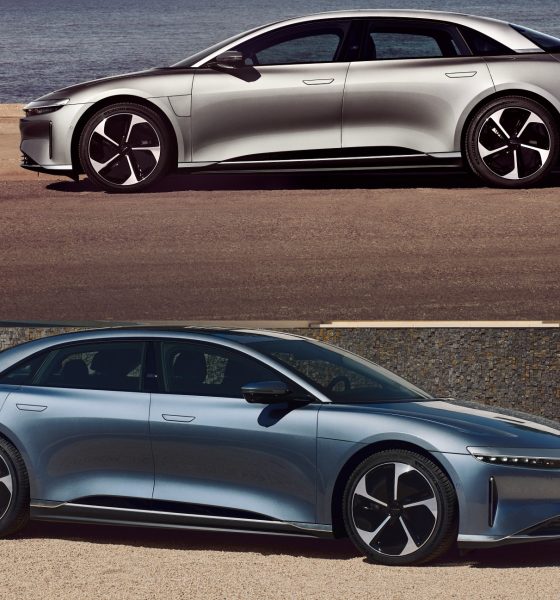
News
Lucid Air Pure, Air Touring debut with landmark drag coefficient for production cars
The Lucid Air Pure and Air Touring just debuted. Along with their launches, Lucid also announced a landmark drag coefficient for all Air models.
“Performance. Range. Luxury. Technology. Design. It’s all here in the newly expanded Lucid Air model lineup as Air Pure and Air Touring – with their remarkably spacious interiors – take their place alongside Air Grand Touring, Grand Touring Performance, and the recently announced Air Sapphire,” said Lucid Group CEO and CTO Peter Rawlinson.
“Air Touring matches the landmark 4.6 miles per kWh efficiency of the Grand Touring – albeit at a more affordable price point – an important incremental step to making ultra-efficient EVs more attainable,” he added.
Drag Coefficient of Lucid Air Models
During Lucid Air Pure and Air Touring development, the EV automaker improved the drag coefficient (Cd) of all Air models. Last November, the Lucid Air impressed with a drag coefficient of .200. For comparison, the Tesla Model S Plaid has a drag coefficient of .208.
This year, Lucid topped itself by dropping the drag coefficient of all Air models down to .197. The company emphasized that the new drag coefficient of its Air models makes the lineup the most aerodynamically efficient production cars on the market.
The Lucid Air Pure Debut
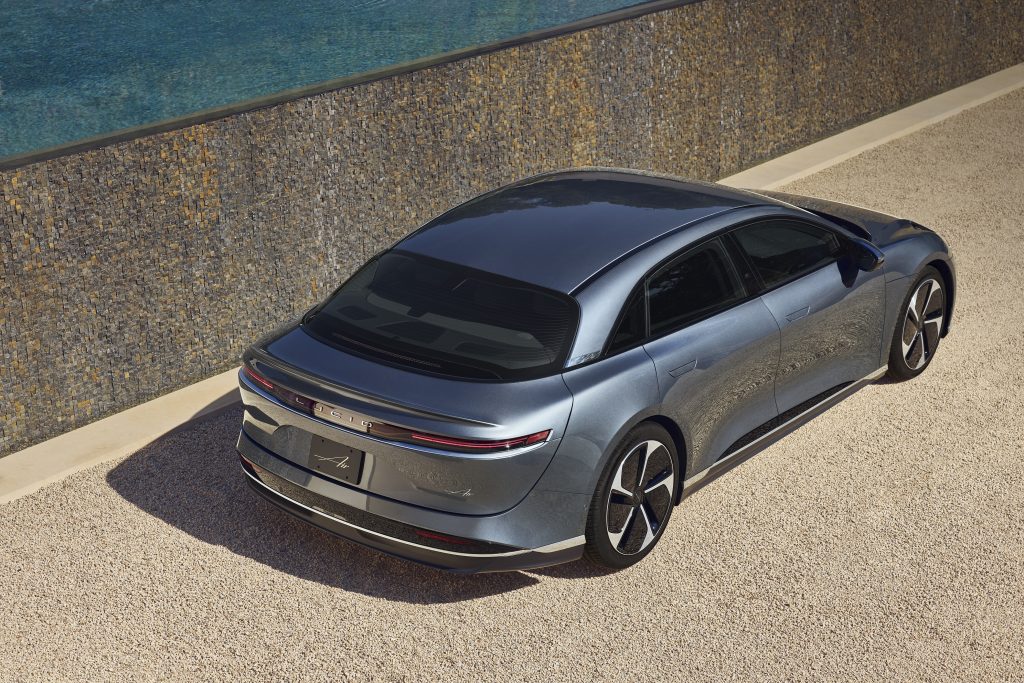
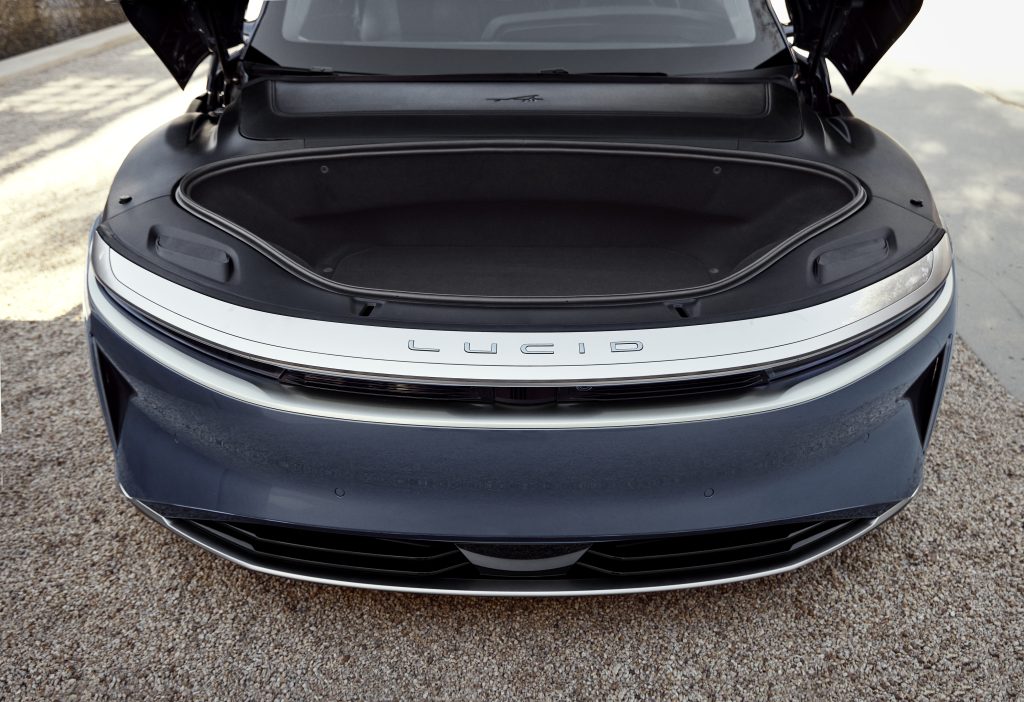

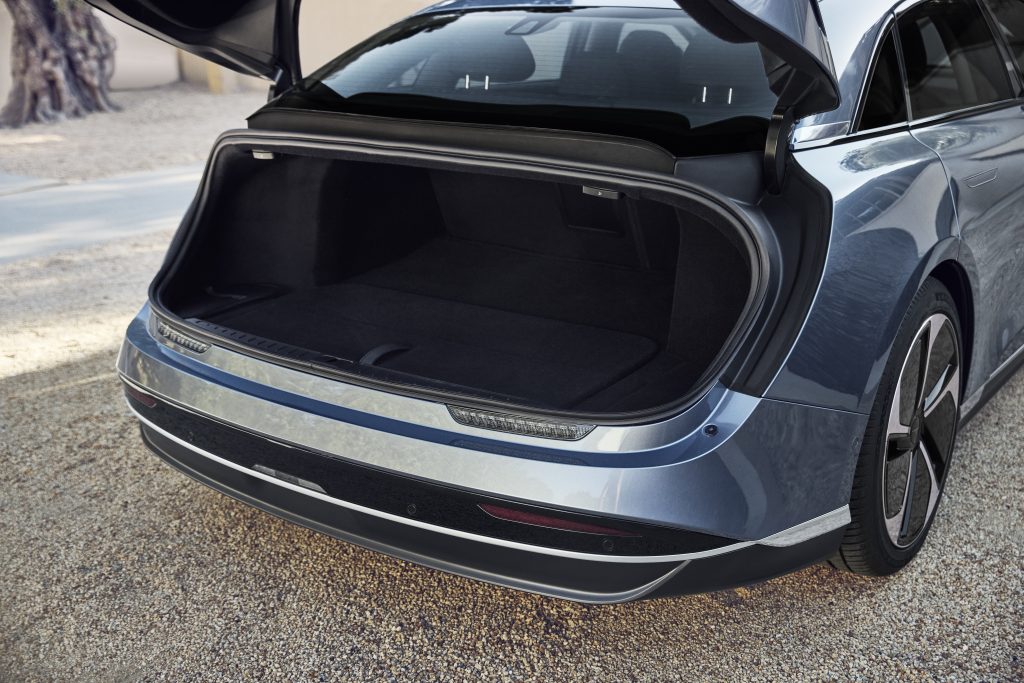

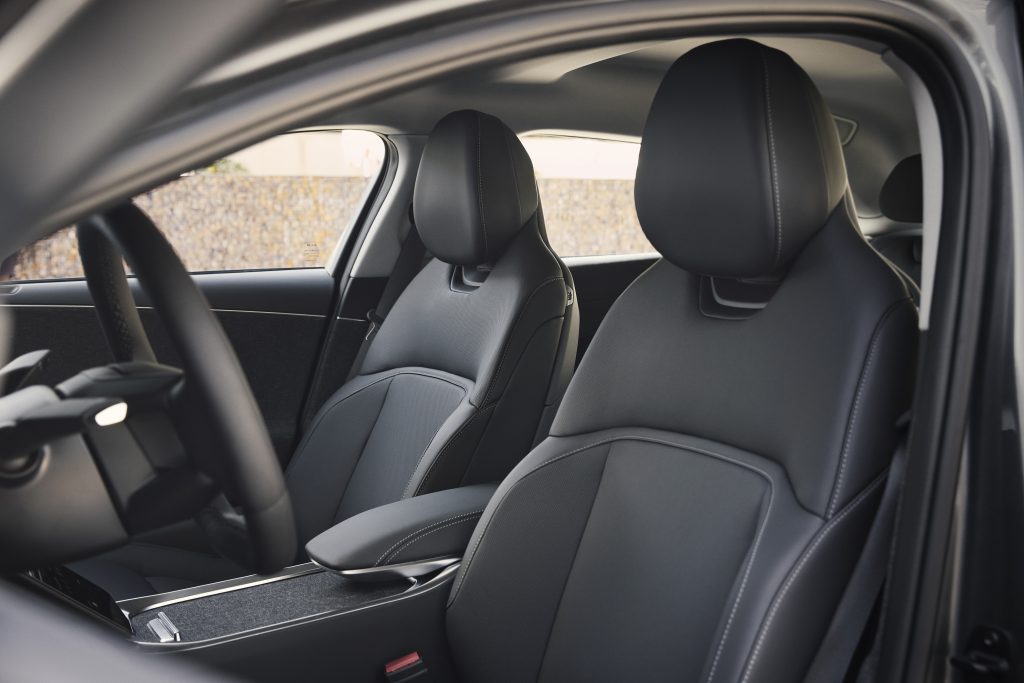
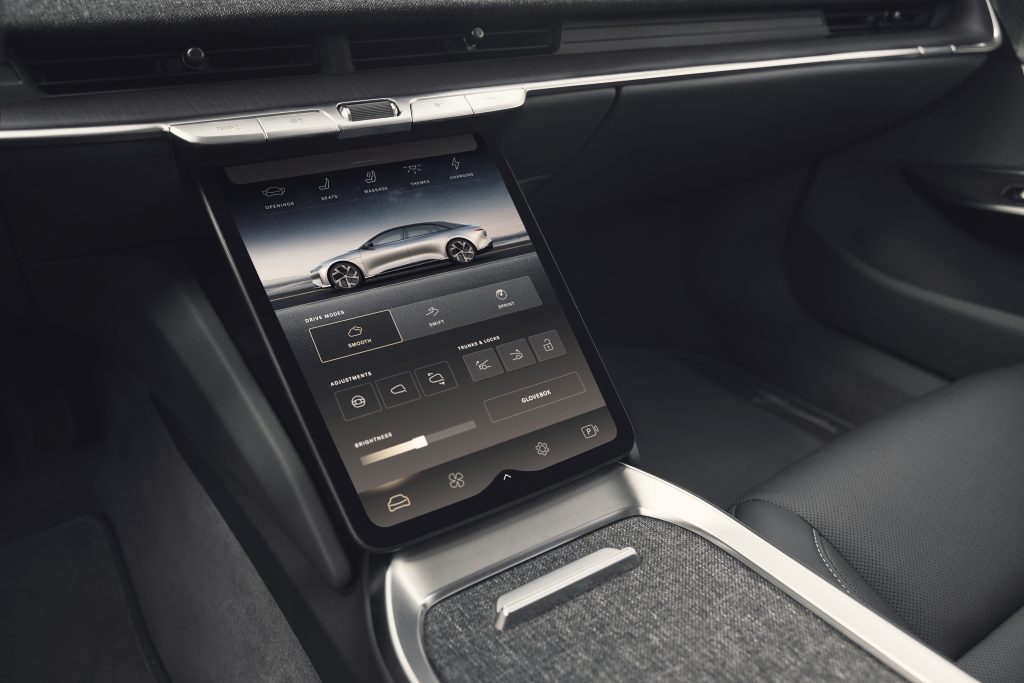
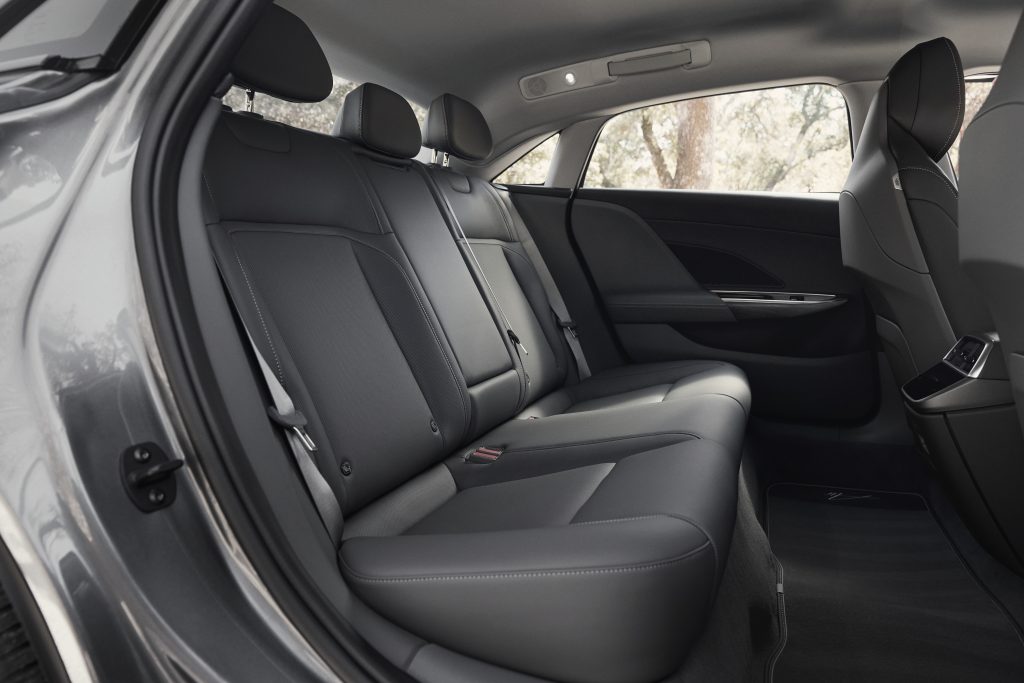
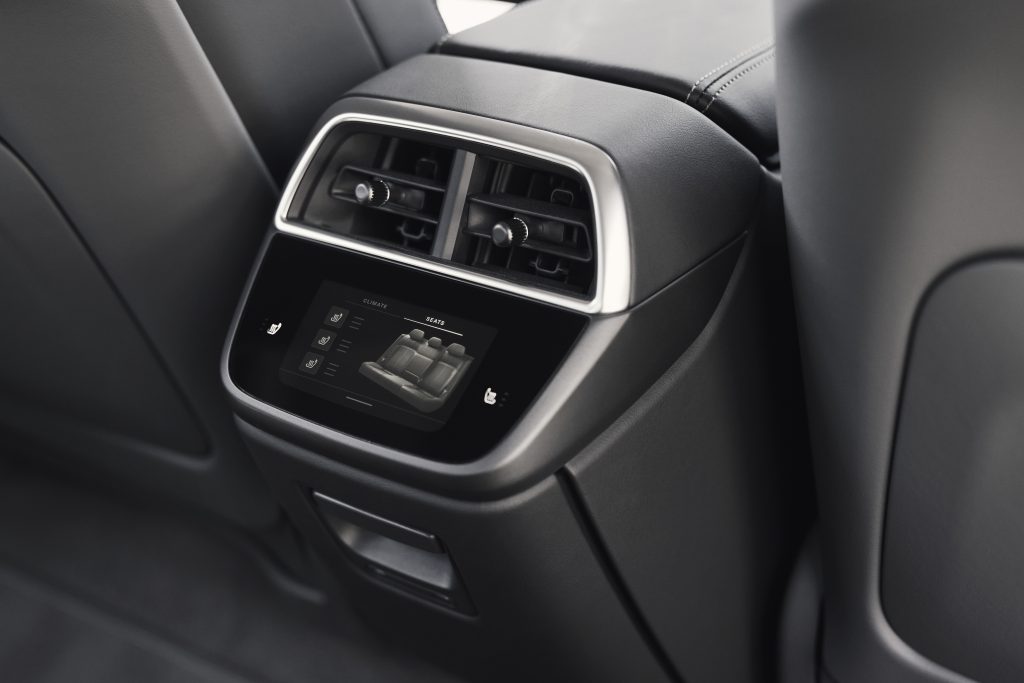
On November 15, the Lucid Air Pure debuted. It comes in two configurations: the Dual-Motor, All-Wheel-Drive (AWD) Air Pure and the single-motor, Rear-Wheel-Drive version. The Dual-Motor AWD Air Pure delivers up to 480 horsepower.
The Air Pure uses Lucid’s Long Range battery pack, made of 18 modules instead of the 22 modules that comprise the Extended Range battery pack. The Long Range battery pack’s fewer modules make the Air Pure more efficient on the road.
The AWD variant received an EPA-estimated range of 410 miles. The Air Pure comes standard with Lucid’s Wunderbox technology with high-speed charging rates that deliver up to 200 miles of additional range within 15 minutes.
Lucid plans to start producing Dual-Motor AWD Air Pure vehicles next month. Initial customer deliveries of Dual-Motor AWD Air Pure EVs are expected to begin before the end of the year. In 2023, Lucid plans to launch the single motor RWD Air Pure variants.
The Lucid Air Touring Debut



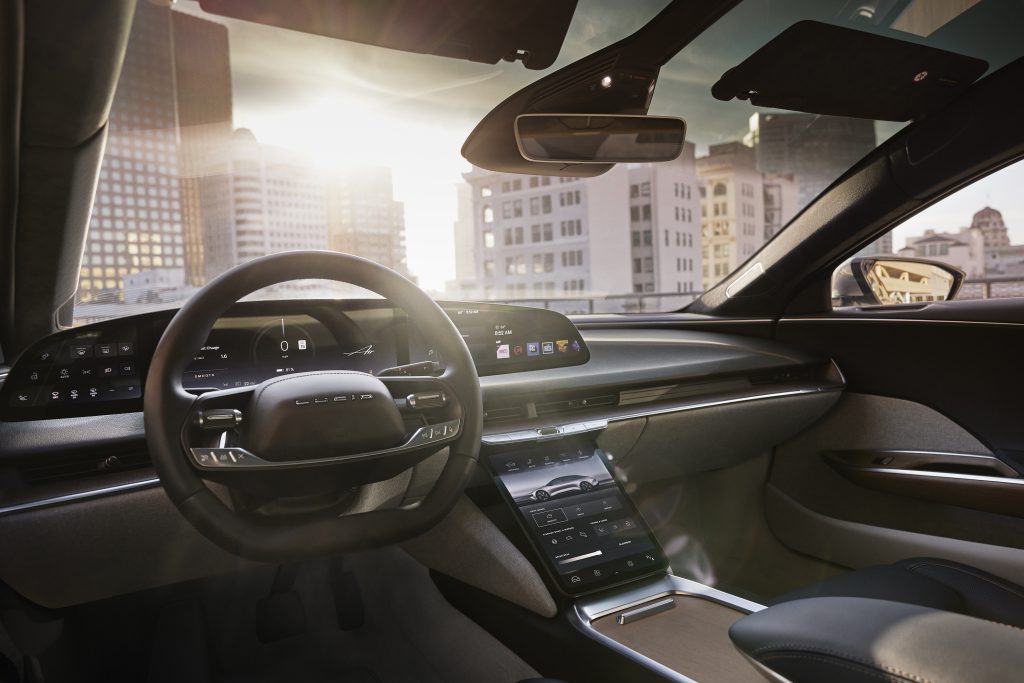
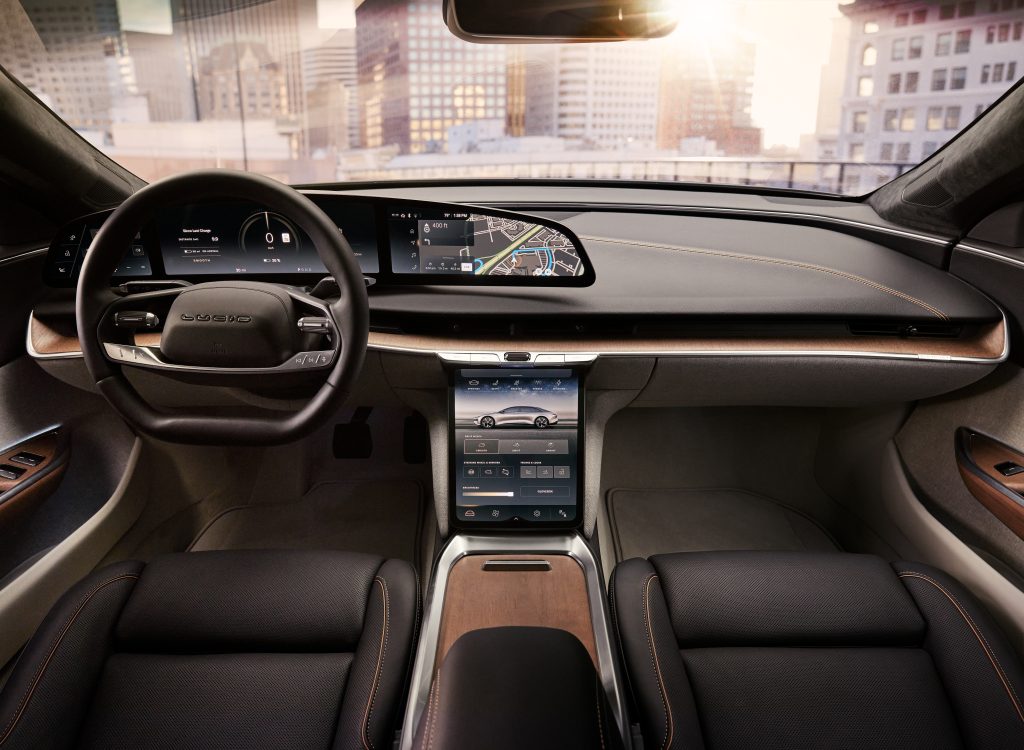

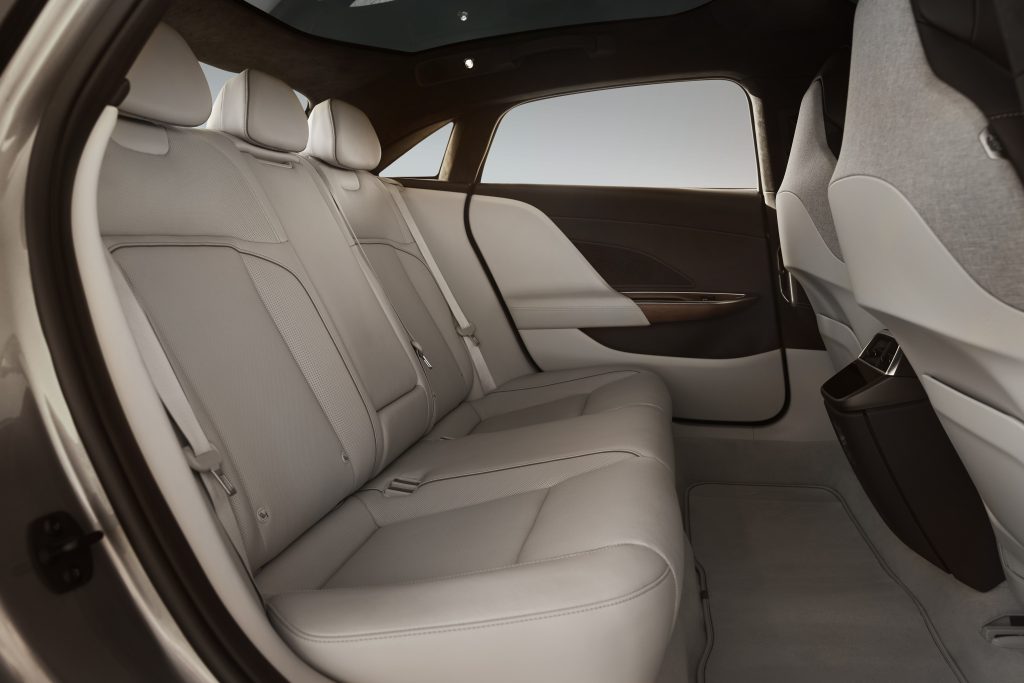
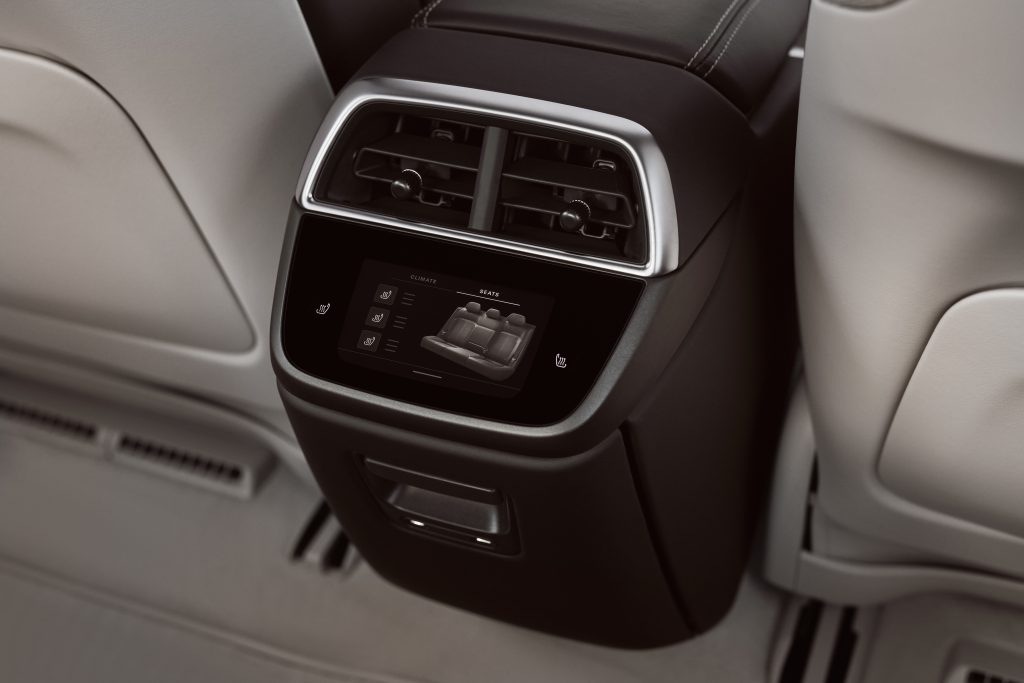
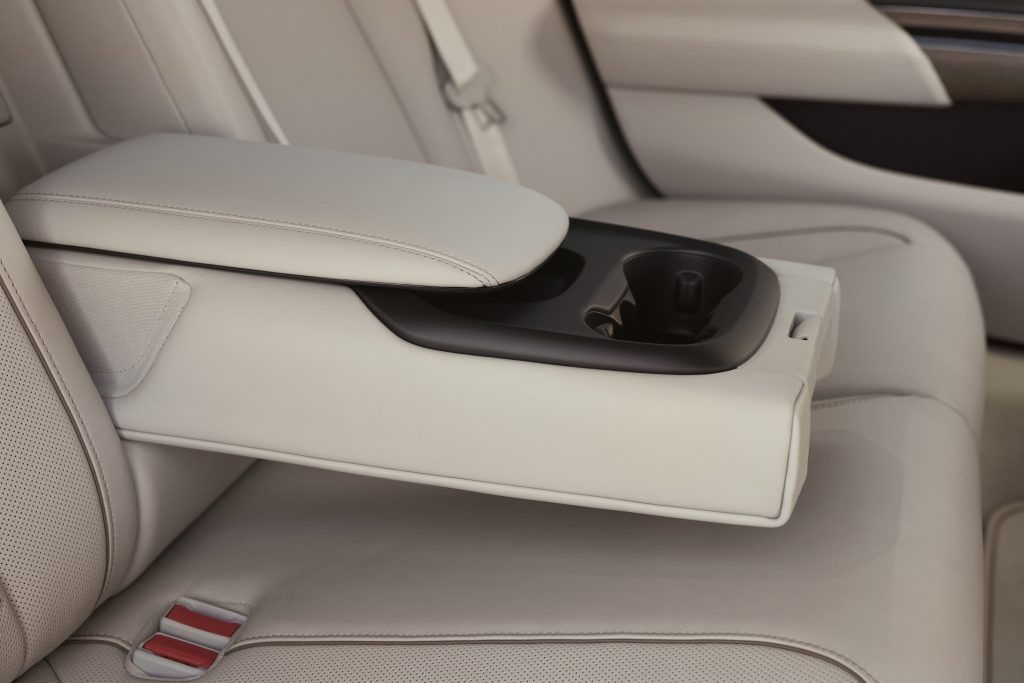
While all the Lucid Air models are impressive, the Air Touring offers the most impressive options for customers at an excellent price point.
“Lucid Air Touring offers more power, greater range, and faster charging than anything else in its category, with an extraordinary fusion of performance and interior space. It sits in the heart of the Lucid Air family and offers the most options and flexibility – allowing customers to create a version that precisely fits their needs,” noted the company.
The Lucid Air Touring launches with a Dual-Motor AWD powertrain, which delivers 620 horsepower. It can accelerate from 0-60 mph in 3.4 seconds.
The Air Touring is equipped with Lucid’s 18-module Long Range battery pack like the Air pure. With the Long Range battery Pack, the Air Touring has the highest driving efficiency of any Lucid Air vehicle to date at 4.62 miles per kilowatt hour. It has an EPA-estimated range of 425 miles.
Air Pure, Air Touring Prices
The Lucid Air Pure starts at $87,400 plus an additional $5,500 for the Dual-Motor AWD drivetrain. Air Pure purchases include the Lucid User Experience with Navigation, Lucid’s DreamDrive advanced driver assistance system, and complimentary charging at Electrify America stations.
The Dual-Motor AWD Lucid Air Touring starts at $107,400. Features included in the Air Touring are the Lucid User Experience with Navigation, and complimentary charging at Electrify America stations. Lucid’s DreamDrive will be available with the Air Touring by Q1 2023.
I’d appreciate hearing from you. If you have any tips, contact me at maria@teslarati.com or via Twitter @Writer_01001101.

Elon Musk
Elon Musk and Tesla AI Director share insights after empty driver seat Robotaxi rides
The executives’ unoccupied tests hint at the rapid progress of Tesla’s unsupervised Robotaxi efforts.

Tesla CEO Elon Musk and AI Director Ashok Elluswamy celebrated Christmas Eve by sharing personal experiences with Robotaxi vehicles that had no safety monitor or occupant in the driver’s seat. Musk described the system’s “perfect driving” around Austin, while Elluswamy posted video from the back seat, calling it “an amazing experience.”
The executives’ unoccupied tests hint at the rapid progress of Tesla’s unsupervised Robotaxi efforts.
Elon and Ashok’s firsthand Robotaxi insights
Prior to Musk and the Tesla AI Director’s posts, sightings of unmanned Teslas navigating public roads were widely shared on social media. One such vehicle was spotted in Austin, Texas, which Elon Musk acknowleged by stating that “Testing is underway with no occupants in the car.”
Based on his Christmas Eve post, Musk seemed to have tested an unmanned Tesla himself. “A Tesla with no safety monitor in the car and me sitting in the passenger seat took me all around Austin on Sunday with perfect driving,” Musk wrote in his post.
Elluswamy responded with a 2-minute video showing himself in the rear of an unmanned Tesla. The video featured the vehicle’s empty front seats, as well as its smooth handling through real-world traffic. He captioned his video with the words, “It’s an amazing experience!”
Towards Unsupervised operations
During an xAI Hackathon earlier this month, Elon Musk mentioned that Tesla owed be removing Safety Monitors from its Robotaxis in Austin in just three weeks. “Unsupervised is pretty much solved at this point. So there will be Tesla Robotaxis operating in Austin with no one in them. Not even anyone in the passenger seat in about three weeks,” he said. Musk echoed similar estimates at the 2025 Annual Shareholder Meeting and the Q3 2025 earnings call.
Considering the insights that were posted Musk and Elluswamy, it does appear that Tesla is working hard towards operating its Robotaxis with no safety monitors. This is quite impressive considering that the service was launched just earlier this year.
Elon Musk
Starlink passes 9 million active customers just weeks after hitting 8 million
The milestone highlights the accelerating growth of Starlink, which has now been adding over 20,000 new users per day.

SpaceX’s Starlink satellite internet service has continued its rapid global expansion, surpassing 9 million active customers just weeks after crossing the 8 million mark.
The milestone highlights the accelerating growth of Starlink, which has now been adding over 20,000 new users per day.
9 million customers
In a post on X, SpaceX stated that Starlink now serves over 9 million active users across 155 countries, territories, and markets. The company reached 8 million customers in early November, meaning it added roughly 1 million subscribers in under seven weeks, or about 21,275 new users on average per day.
“Starlink is connecting more than 9M active customers with high-speed internet across 155 countries, territories, and many other markets,” Starlink wrote in a post on its official X account. SpaceX President Gwynne Shotwell also celebrated the milestone on X. “A huge thank you to all of our customers and congrats to the Starlink team for such an incredible product,” she wrote.
That growth rate reflects both rising demand for broadband in underserved regions and Starlink’s expanding satellite constellation, which now includes more than 9,000 low-Earth-orbit satellites designed to deliver high-speed, low-latency internet worldwide.
Starlink’s momentum
Starlink’s momentum has been building up. SpaceX reported 4.6 million Starlink customers in December 2024, followed by 7 million by August 2025, and 8 million customers in November. Independent data also suggests Starlink usage is rising sharply, with Cloudflare reporting that global web traffic from Starlink users more than doubled in 2025, as noted in an Insider report.
Starlink’s momentum is increasingly tied to SpaceX’s broader financial outlook. Elon Musk has said the satellite network is “by far” the company’s largest revenue driver, and reports suggest SpaceX may be positioning itself for an initial public offering as soon as next year, with valuations estimated as high as $1.5 trillion. Musk has also suggested in the past that Starlink could have its own IPO in the future.
News
NVIDIA Director of Robotics: Tesla FSD v14 is the first AI to pass the “Physical Turing Test”
After testing FSD v14, Fan stated that his experience with FSD felt magical at first, but it soon started to feel like a routine.

NVIDIA Director of Robotics Jim Fan has praised Tesla’s Full Self-Driving (Supervised) v14 as the first AI to pass what he described as a “Physical Turing Test.”
After testing FSD v14, Fan stated that his experience with FSD felt magical at first, but it soon started to feel like a routine. And just like smartphones today, removing it now would “actively hurt.”
Jim Fan’s hands-on FSD v14 impressions
Fan, a leading researcher in embodied AI who is currently solving Physical AI at NVIDIA and spearheading the company’s Project GR00T initiative, noted that he actually was late to the Tesla game. He was, however, one of the first to try out FSD v14.
“I was very late to own a Tesla but among the earliest to try out FSD v14. It’s perhaps the first time I experience an AI that passes the Physical Turing Test: after a long day at work, you press a button, lay back, and couldn’t tell if a neural net or a human drove you home,” Fan wrote in a post on X.
Fan added: “Despite knowing exactly how robot learning works, I still find it magical watching the steering wheel turn by itself. First it feels surreal, next it becomes routine. Then, like the smartphone, taking it away actively hurts. This is how humanity gets rewired and glued to god-like technologies.”
The Physical Turing Test
The original Turing Test was conceived by Alan Turing in 1950, and it was aimed at determining if a machine could exhibit behavior that is equivalent to or indistinguishable from a human. By focusing on text-based conversations, the original Turing Test set a high bar for natural language processing and machine learning.
This test has been passed by today’s large language models. However, the capability to converse in a humanlike manner is a completely different challenge from performing real-world problem-solving or physical interactions. Thus, Fan introduced the Physical Turing Test, which challenges AI systems to demonstrate intelligence through physical actions.
Based on Fan’s comments, Tesla has demonstrated these intelligent physical actions with FSD v14. Elon Musk agreed with the NVIDIA executive, stating in a post on X that with FSD v14, “you can sense the sentience maturing.” Musk also praised Tesla AI, calling it the best “real-world AI” today.








